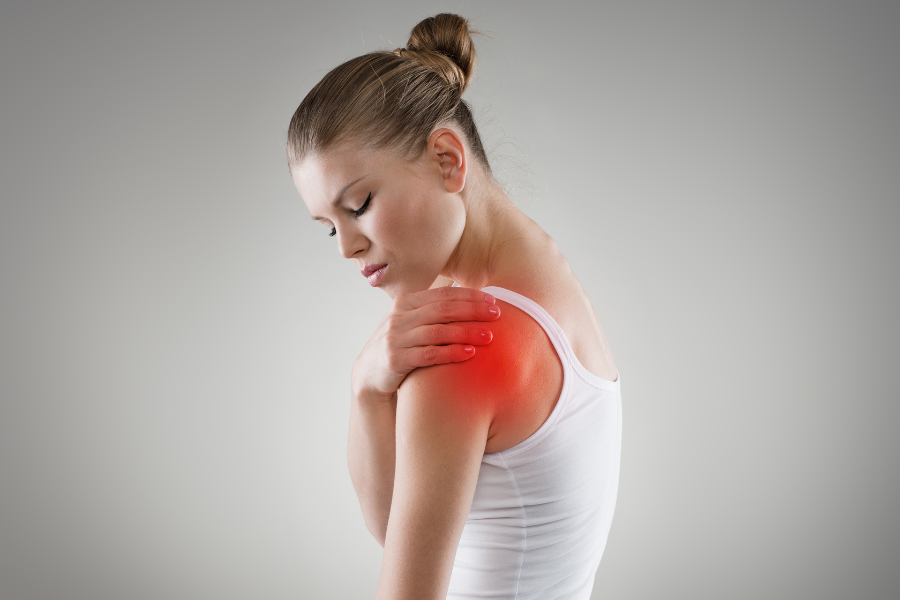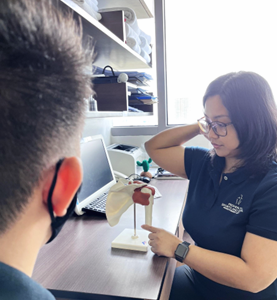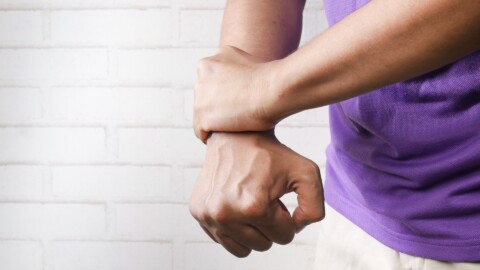Written by Czarina Mangubat
Our daily routine often consists of using our shoulder joint, a major joint and arguably the most commonly dislocated in the body. This means that we are able to reach overhead, behind, and in front without easily compromising the joint. However, over time, the structures holding this strong joint will undergo changes brought about by overuse.
Due to its anatomical structure, a simple shoulder pain could be caused by a variety of reasons.
The Shoulder and its Structure
The shoulder joint is formed by the scapula (shoulder blade), the humerus (upper arm bone), and a slight but significant association from the clavicle (collar bone).
These structures are held together by muscles and ligaments crossing over. As the humerus moves, the scapula joins in, giving more range and smoother movement. The rotator cuff muscles are the main group of muscles responsible for the joint’s stability. It consists of the supraspinatus, infraspinatus, teres minor, and subscapularis.
The shoulder relies on the muscles attached to it for stability because of the shallow area in the scapula where the humerus attaches. The humerus slides and rolls over the scapula during shoulder movements.
The scapula also glides over the thoracic area (the upper back) and gives the joint more movement to accommodate our daily tasks. Reaching behind the head and the back are among the daily tasks we do that demonstrates how moveable the joint is.

The Complicated Shoulder Pains
Shoulder pain is the third most commonly reported musculoskeletal pain, with individuals above 45 being more prone to this condition. Shoulder pain can be caused by an inflamed tendon, bursae, a tear in one or more muscles around it, and sometimes problems with the joint spaces itself. These factors alter the normal biomechanics of the joint. The natural rolling, gliding, and sliding of the joint is lost. This causes limited scapular movement and muscle imbalances, leading to joint stiffness, and pain that affects a person’s quality of life.
Inflammation of the tendons and bursae are usually caused by repetitive movements of the shoulder that subject the tendons and bursa to friction which develop inflammation.
Muscle and tendon tears are usually the result of trauma, such as forceful movement of the shoulder. Sometimes this can be caused by poor lifting techniques. Faulty posture can result in muscle imbalance due to the tightness of the muscles surrounding the shoulder joint. This could either be from sitting in one position for a long time or a sedentary lifestyle.
Manual Therapy and Exercises for Shoulder Pain
Physical therapists apply a variety of treatment techniques that help in restoring shoulder biomechanics. Recent studies have shown that a combination of manual therapy and exercises are proven to be effective in decreasing shoulder pain and stiffness. Addressing these issues eventually lead to increased shoulder range of motion, improving quality of life.

These techniques include joint mobilization, muscle tissue release, and movement with mobilization on joints. A thorough assessment of the shoulder’s current status affects the therapist’s choice for the technique and exercise program, as well as the dose, frequency, and intensity of these treatments. One of the more effective techniques in increasing the shoulder’s range of motion is the guided scapular mobilization with muscle tissue release.
Exercises that improve shoulder biomechanics are a combination of stretching and strengthening. Stretching is encouraged prior to strengthening to address tight structures, improve range of motion, and decrease muscle imbalances. This increases shoulder joint space and, in turn, relieves the joint of any impinged structures.
Strengthening of specific muscles depends on how the shoulder is used on a daily basis. However, it is highly encouraged that the rotator cuff muscles along with scapular stabilizers are strengthened to add more stability to the joint. A combination use of resistance bands and free weights can help personalize a treatment program depending on the patient’s needs.
Patient and Physical Therapist Tandem
Although physical therapists are the designated health care movement experts, it is highly encouraged that patients comply with the prescribed home exercise program. Compliance to a personally tailored exercise program has shown to improve shoulder conditions at a steady pace. This allows carry over after every session that encourages repetition, increasing the chances for better recovery.

Written by: Czarina “Cha” Mangubat
Czarina is an experienced physiotherapist using a range of physical techniques to improve mobility, flexibility, stability, strength and conditioning. She always enjoys seeing patients recover which inspires her to fulfil her role as a movement expert.
References
Dueñas, L., Balasch-Bernat, M., Aguilar-Rodriguez, M., Struyf, F., & Lluch, E. (2019). A Manual Theraoy and Home Stretching Program in Patients With Primary Frozen Shoulder Contracture Syndrome: A Case Series. Journal or Orthopedic & Sports Physical Therapy, 192-201.
Pieters, L., Lewis, J., Kuppens, K., Jochems, J., Bruijstens, T., Joossnes, L., & Struyf, F. (2020). An Update of Systematic Reviews Examining Effectiveness of Conservative Physical Therapy Interventions for Subacromial Shoulder Pain. Journal of Orthopedic & Sports Physical Therapy, 131-141.
Mohamed, A. A., Jan, Y.-K., El Sayed, W. H., & Abdel Wanis, M. E. (2020). Dynamic Scapular Recognition Exercises Improves Scapular Upward Rotation and Shoulder Pain and Disability in Patients with Adhesive Capsulitis: A Randomized Control Trial. Journal of Manual & Manipulative Therapy, 146-158.
Steuri, R., Sattlemayer, M., Elsig, S., Kolly, C., Tal, A., Taeymans, J., & Hilfiker, R. (2017). Effectiveness of Conservative Interventions Including Exercise, Manual Therapy and Medical Management in Adults with Shoulder Impingement: A Systematic Review and Meta-Analysis of RCTs. Biomedical Journal (BMJ) , 1-10.
Tahran, O., & Yesilyaprak, S. S. (2020). Effects of Modified Posterior Shoulder Stretching Exercises on Shoulder Mobility, Pain, and Dysfunction in Patients with Subacromial Impingement Syndrome. Sports Health, 139-148.




